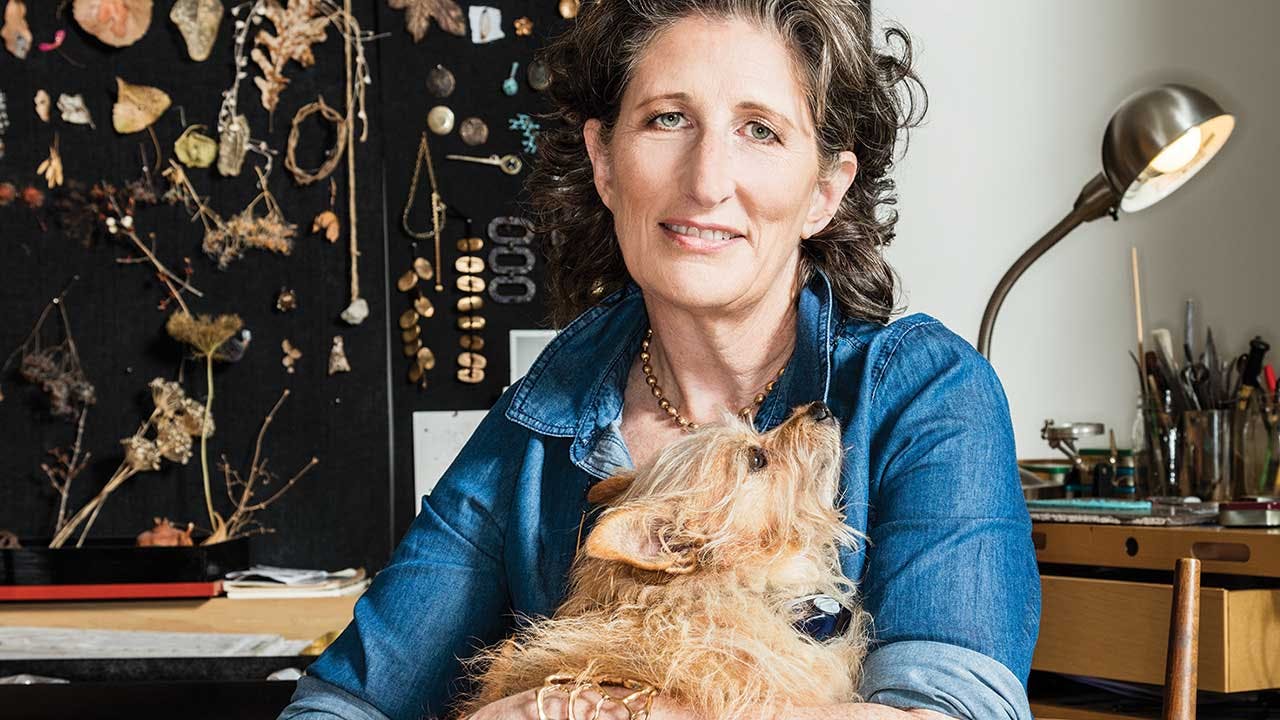Every morning, Julie Cohn walks the trails around Dallas’s White Rock Lake, finding inspiration for her earthy but sculptural jewelry line along the way. “It is a luxury to see that much flora and fauna at the onset of my day,” she says. She gathers twigs, seeds, and flowers and brings them back to her studio, in the Lakewood home she shares with her husband, landscape architect David Rolston, and their fifteen-year-old daughter, Mila.
Before Cohn turned to jewelry design, she and a friend ran a successful business for fifteen years called Two Women Boxing, which showcased their handmade books and boxes. Then she began branching out into other areas, designing rugs, dinnerware, and textiles. When the economy crashed in 2008, the design work dried up, so she started experimenting with jewelry-making. Working in a variety of techniques to achieve a hand-formed look, she quietly put together a collection; then a neighbor commissioned her to make three rings for his wife. “I realized I had to move into wax carving in order to set stones with precision. That was a big turning point for me,” she says. Now you can find her line in over thirty retail locations nationwide, but she still makes time for other projects, like Luminaria (created with fellow artist Diana Goldberg), a series of six 10-foot-tall metal cylinders situated outside the terminal doors at Love Field airport. “Making things is all I have ever wanted to do since childhood,” Cohn says. “If I am not creating, I feel really unproductive.”

What was the most challenging part of learning to make jewelry?
Jewelry is very labor-intensive. I like immediate gratification, and I’m not an extremely patient person. I don’t have the patience or dexterity to be a bench jeweler. I am self-taught and create to the level of skill that I have, and if my work requires a greater level of precision, stone setting, or detailed fabrication, I will collaborate with a bench jeweler. I am always learning and perfecting my craft.
How would you describe your style?
My aesthetic is inspired by Etruscan, African, and other ancient jewelry. There is a simplicity in that style that is also very modern to me.
What are your favorite materials to work with?
My favorite material to work with is gold. While I love the luster, color, and history of bronze jewelry, it is a very difficult metal to work with.
Your husband is an acclaimed landscape architect. Do you two bounce ideas off each other?
Our creative dialogue is about our house, garden, interior design, and architecture. While I derive a lot of inspiration from the beautiful, lush garden he created, which is the view from my studio, we don’t often discuss my jewelry designs.
You’ve been successful in many different fields. What are you most proud of?
For 35 years, I have been part of a women’s political art collaborative called Toxic Shock, composed of sculptor Frances Bagley, photographer Debora Hunter, artist Susan Magilow, and my late business partner, photographer Linda Finnell. While we have not made any new work since the late eighties, we stay in close touch with each other. In 2013 Leigh Arnold, a guest curator at the Dallas Museum of Art, asked us to show several of Toxic Shock’s pieces in a 50-year retrospective of the Dallas art scene.
It was very validating for our contribution to the art community.
What will your next creative pursuit be?
I would love to learn 3-D rendering, so I could design on the computer and print my jewelry. I love the idea of creating organic design with a mechanical process. I am definitely a person who lives to work—and learn.
For more information, go to juliecohndesign.com.







